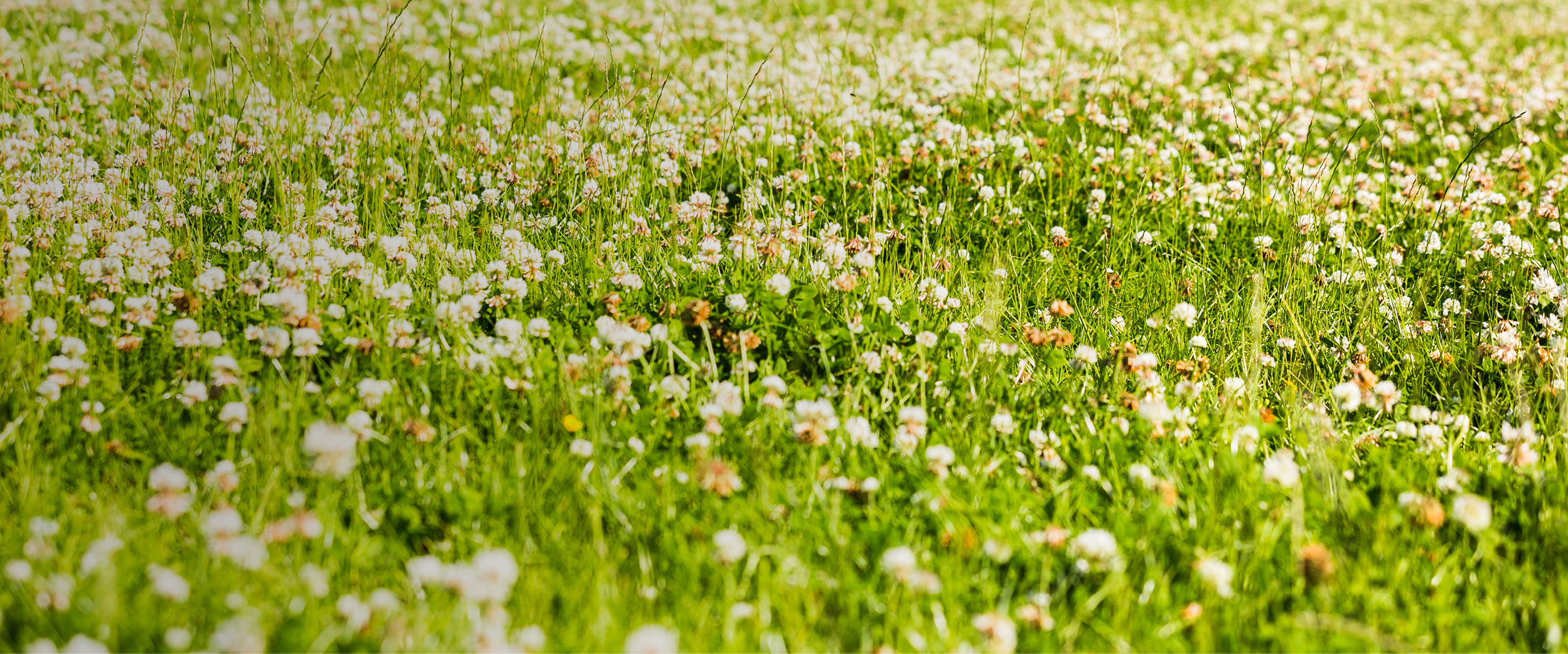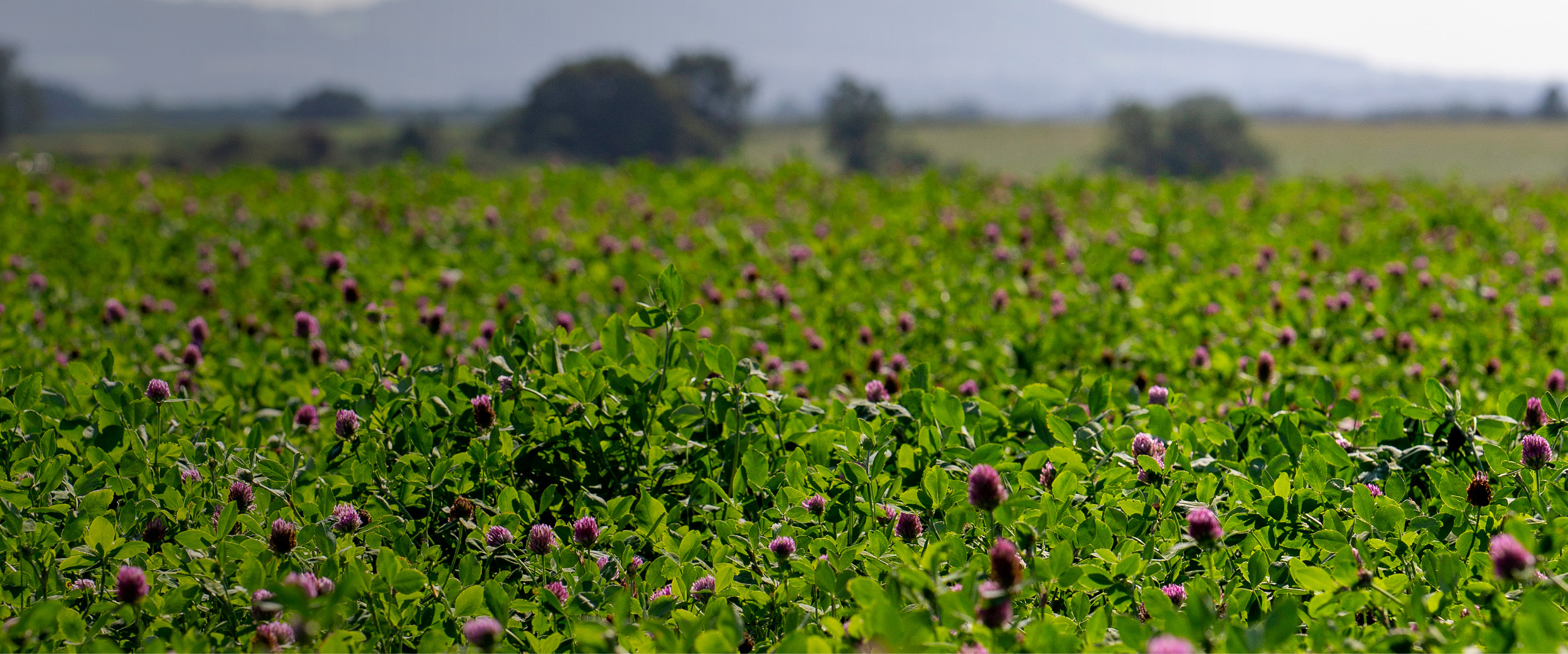Many livestock farmers enjoy the benefits of including clover in their swards not least because of its positive impact on animal performance. But more recently, it is clover’s ability to convert atmospheric nitrogen into a plant-useable form and fix it in the soil which has attracted interest.
With the potential to supply between 100 and 250 kg N/ha, clover reduces both the requirement and associated cost of fertiliser applications without impacting grass yield.
And the role of white and red clovers in modern sustainable grassland farming continues to expand with new varieties offering additional benefits. Our research and innovation team, Germinal Horizon, is at the forefront of this breeding innovation.
“Our clovers are bred specifically to support today’s production systems. Nitrogen fixation is a particular focus of our forage legume programmes, thereby supporting farmers striving to reduce their use of mineral nitrogen fertiliser,” says David Lloyd, Head of Forage Plant Breeding for Germinal Horizon in Aberystwyth.
White clover
White clover can supply between 100 to 250 kg nitrogen/ha reducing the requirement and cost of fertiliser applications. It helps promote summer grazing when grass productivity might be slowing up, increasing nutrient intake.
Its strong creeping stem also makes it tolerant of grazing and enables the plant to store energy and protein over winter into spring.
White clover is best grown as a companion to ryegrass, the variety dependent on the sward’s primary use: “Compatibility is an important attribute tested routinely in the breeding of Germinal’s white clover varieties. A compatible grass/clover mixture has a clover content sufficiently large to optimise its nutritional and nitrogen-fixing attributes when growing with a high-yielding companion grass,” explains David.
Germinal varieties AberHerald, with a medium-sized leaf, and smaller-leaved AberAce are both on the 2021 Grass & White Clover Recommended List. Additional varieties, AberSwan and AberPearl, are currently being trialled.

Clover breeding
“We are also breeding varieties to cope with a wider range of climatic conditions as well as retaining white clover’s existing qualities. Improved drought tolerance and persistence is being achieved by developing hybrids of white clover with a rhizomatous Caucasian clover well-suited to dry conditions.”
AberLasting is the first of these new-generation white clovers with rhizomatous root characteristics in addition to stolons.
Red clover
Red clover is a high-quality, cost-effective source of homegrown protein, potentially reducing the reliance on bought-in feed. With a protein content of 18-20%, it is an attractive option for feeding livestock.
But one of its shortcomings has been its relatively short persistence, typically remaining in the sward for just two to three years.
“The new generation red clovers bred at Germinal Horizon Aberyswyth, have overcome this problem. They last at least four years in a cutting sward and are significantly more tolerant of grazing,” David continues.
“Red clover has good environmental credentials, too. It fixes nitrogen at a rate of 150 kg N/ha, cutting the need for nitrogen fertiliser, and reducing nitrogen leaching into the environment. Encouraged by results seen on farm, we are now working on the development of new varieties with resistance to the more common disease challenges,” he concludes.

For more information on maximising the potential of red and white clover, check out our webinar: Maximising the potential of white and red clover
